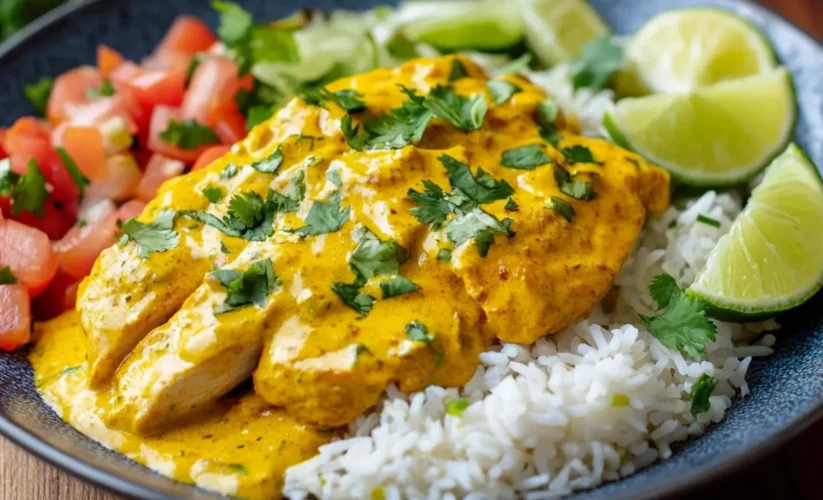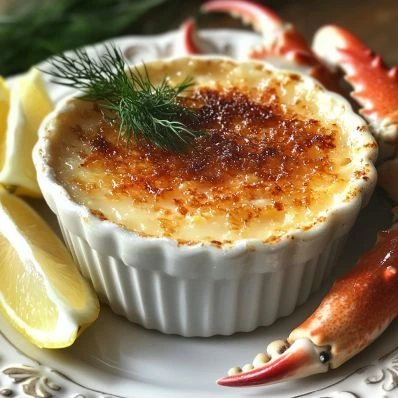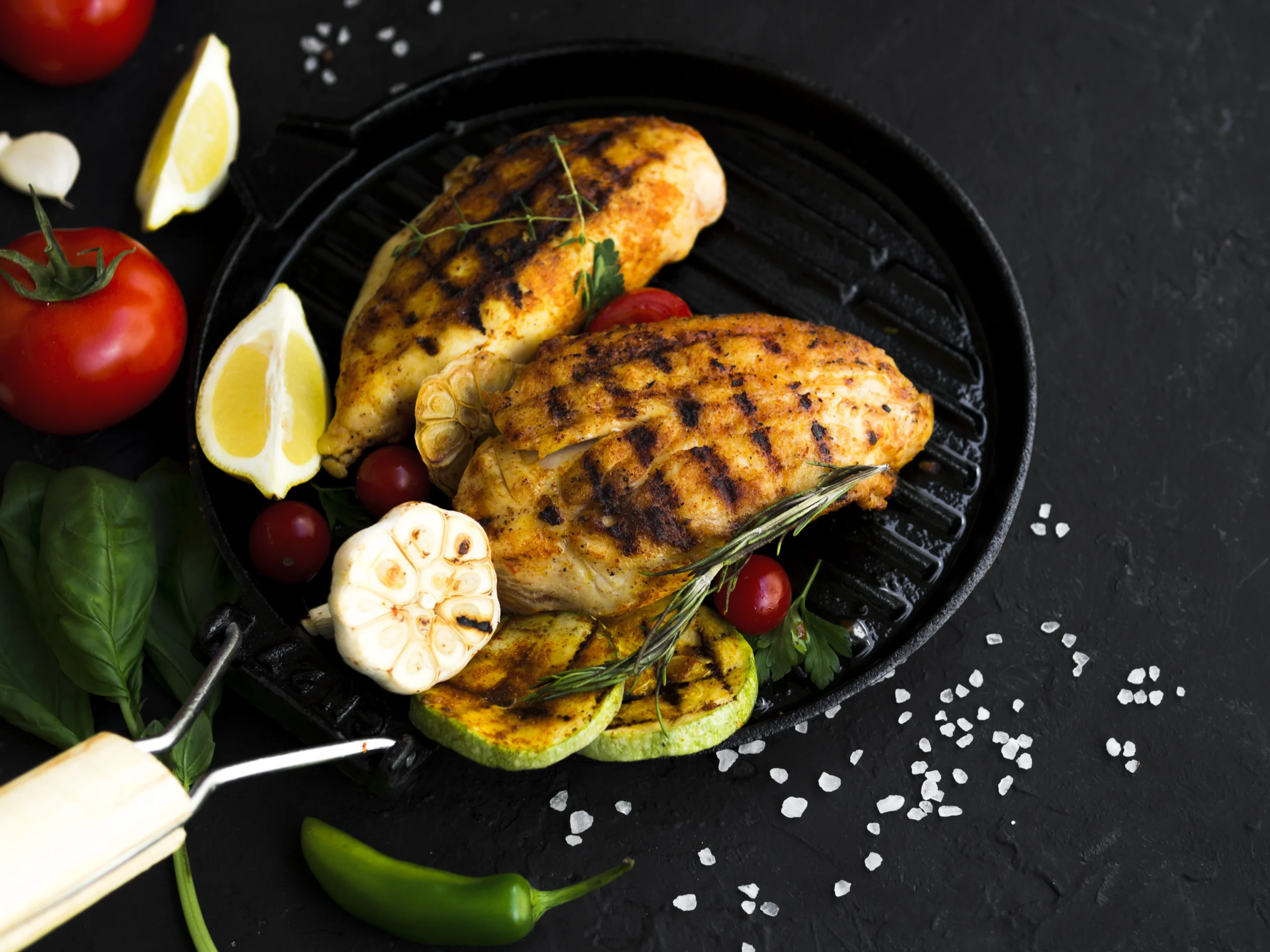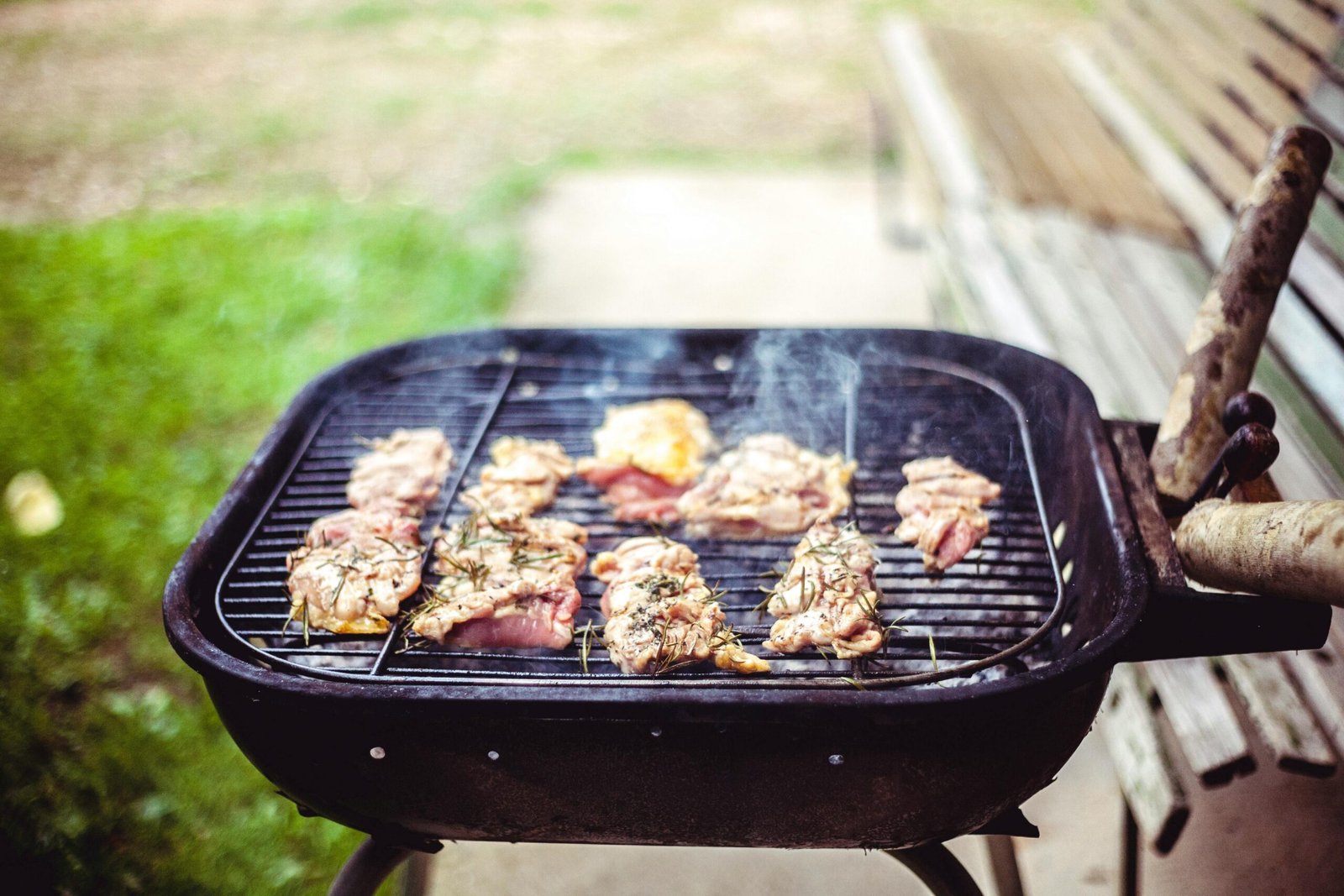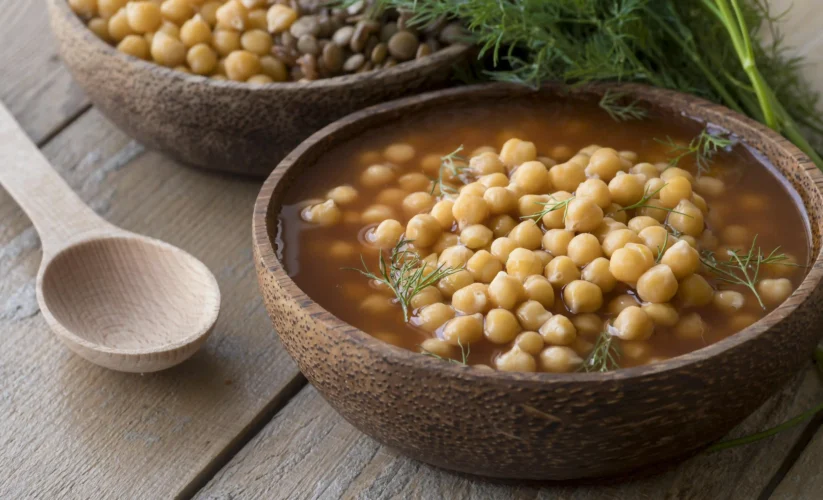
Joan Nathan’s Chickpea Soup Recipe
If you’re looking for the ultimate comfort food that balances flavor and nutrition, Joan Nathan’s Chickpea Soup Recipe is a perfect choice. This beloved dish draws from Jewish and Middle Eastern cuisines, combining the simplicity of standard pantry ingredients with the beauty of fresh herbs and vibrant flavors. Packed with plant-based protein, it’s a healthy meal option for vegetarians and vegans alike. Whether you’re a home cook or a professional, this hearty and fulfilling dish is easy to prepare and fits perfectly into a health-conscious lifestyle.
What makes this recipe stand out is its versatility. The soup promotes the use of whole, unprocessed ingredients, allowing you to customize it with seasonal vegetables and your favorite spices to suit your palate. It can simmer slowly for a more indulgent flavor, making it ideal for a busy day or any occasion. This restorative dish is not just about convenience but also celebrates the art of simplicity. It’s a comforting meal that showcases the expertise of a timeless kitchen favorite, leaving you with a flavorful and nutritious experience.
Ingredients for Joan Nathan Chickpea Soup
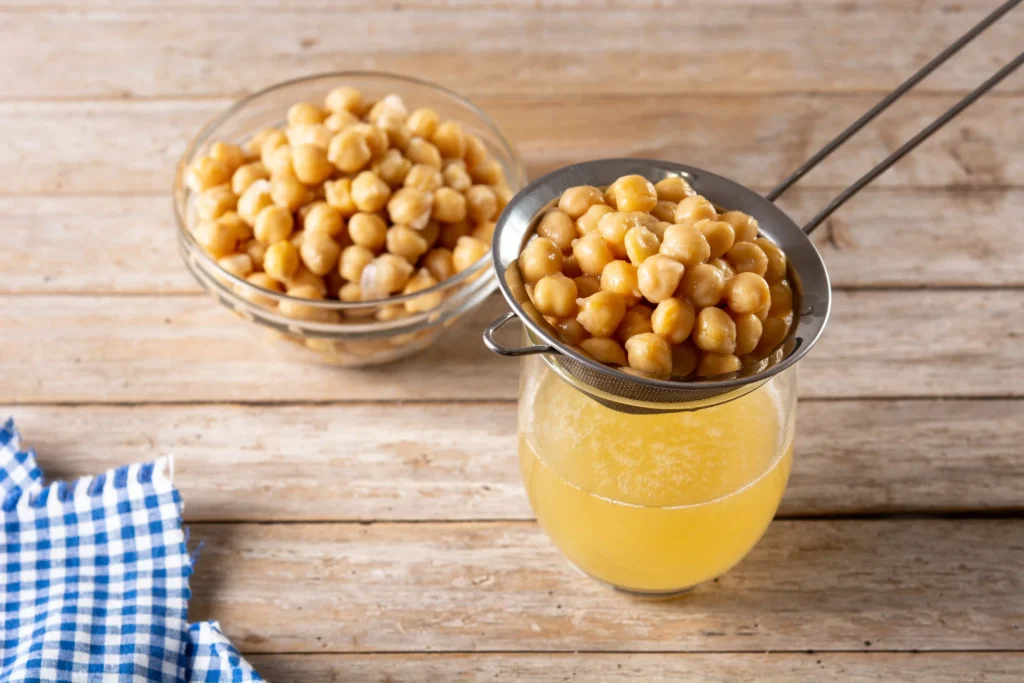
Joan Nathan’s chickpea soup recipe is a celebration of simple, wholesome ingredients that come together to create a delicious and nourishing dish. Every element serves a purpose, contributing to the soup’s balance of flavor, nutrition, and comforting warmth. This plant-based meal is packed with protein and fiber, making it a hearty choice for those seeking a healthy and fulfilling option. The combination of vegetables, spices, and herbs ensures a rich, satisfying experience, while the broth and aromatics provide the depth and complexity that make this dish so beloved.
- Chickpeas: The star ingredient, offering plant-based protein and fiber for a hearty, filling base. Whether dried or canned, chickpeas add a creamy texture and a natural nuttiness.
- Olive Oil: A high-quality extra virgin olive oil serves as the foundation for sautéing and brings a fruity richness to the dish, enhancing its overall flavor.
- Onions and Garlic: These aromatics are sautéed to create a golden, robust base, adding mild sweetness and savory depth that anchor the soup.
- Carrots and Celery: Together, they provide natural sweetness, color, and an earthy texture, while delivering a boost of vitamins and body to the soup.
- Cumin, Turmeric, and Paprika: These spices bring a warm, aromatic essence, a touch of citrusy aroma, and the golden glow that makes this dish visually and flavorfully vibrant.
- Broth (Vegetable or Chicken): The liquid base of the soup, offering savory richness and tying together the flavors into a harmonious bowl of warmth.
- Lemon Juice: Adds a burst of brightness and acidity, perfectly balancing the richness of the soup.
- Parsley or Cilantro: Used as a garnish, these fresh herbs add a final herbal note and a pop of color, completing the dish with a vibrant finish.
Optional Ingredients for Chickpea Soup
When preparing Joan Nathan’s Chickpea Soup, enhancing the flavors with carefully chosen extras can elevate your dish. Here are some great additions to consider for added taste and nutrients:
A Burst of Vegetables
Adding carrots, celery, and even a handful of spinach not only enriches the soup’s color but also boosts its health benefits. These vegetables offer a wholesome depth of flavor while packing essential vitamins.
The Zest Factor
A splash of lemon juice is the secret ingredient that brightens the dish. It cuts through the soup’s richness and provides a delicate balance of flavors, making every bite refreshing.
Fresh and Fragrant Garnishes
Finish the soup with a sprinkle of chopped parsley or cilantro. These vibrant garnishes add an earthy freshness, enhancing the overall aroma and appeal of the dish.
Ingredient Table for Easy Reference
| Ingredient | Quantity | Notes |
| Dried Chickpeas | 1 cup | Soaked overnight for good results |
| Onion | 1 large | chopped |
| Garlic | 3 cloves | Minced or crushed |
| Olive Oil | 2 tbsp | Extra virgin for best flavor |
| Cumin Powder | 1 tsp | Adjust to taste |
| Broth (any type) | 4 cups | Well-seasoned |
Tools and Tips for Making Joan Nathan’s Chickpea Soup
When preparing Joan Nathan’s chickpea soup, having the right tools and a few clever tricks can make the process smoother. Start with a large Dutch oven or a heavy-bottomed soup pot, as these ensure even heat distribution and prevent burning. A sharp chef’s knife is essential for precise chopping of onions, tomatoes, and carrots—this helps to create a uniform texture. Don’t forget measuring spoons and measuring cups to measure ingredients accurately, which is key to achieving the perfect balance of flavors. Use a sturdy wooden spoon for gentle stirring while cooking.
Tools You’ll Need:
- Large Dutch oven or heavy-bottomed soup pot
- Sharp chef’s knife for precise chopping
- Measuring spoons and measuring cups to measure and balance flavors
- Wooden spoon for smooth stirring
A great tip for making the soup creamier and the chickpeas more tender is soaking them overnight. This simple step cuts cooking time significantly and makes the dish easier to prepare. To stay organized, focus on prepping ingredients ahead of time. Dice veggies in advance so you can fully enjoy the process of making easy recipes like this one. By using these tools and planning your prep work, you’ll create a delicious soup without feeling overwhelmed.
Step-by-Step Guide to Joan Nathan’s Chickpea Soup Recipe

Here’s a straightforward approach to recreate Joan Nathan’s comforting chickpea soup recipe in your kitchen. Whether you’re a seasoned cook or just starting, these basic techniques with careful attention to detail ensure a delicious outcome.
Step 1: Preparing the Chickpeas – The Foundation
- Use dried chickpeas for the best flavor. Soak them overnight in plenty of water, which softens them and reduces cooking time.
- Drain and rinse the soaked chickpeas.
- Boil the chickpeas in a large pot of salted water until tender, or use a pressure cooker or Instant Pot for faster results. If using canned chickpeas for convenience, thoroughly rinse them to remove excess salt.
Step 2: Building the Flavor Base
- Heat olive oil in a pot over medium heat. Sauté chopped onions and minced garlic until they turn golden and fragrant.
- Add spices like cumin, coriander, and paprika. Toast them briefly to release their full aroma.
- Pour in your chosen broth and bring it to a boil, then reduce heat to a gentle simmer. Allow the flavors to meld together.
Step 3: Finishing Touches to Elevate the Soup
- Use an immersion blender to blend the soup to your preferred texture. You can make it creamy or leave some chickpeas partially whole for variety.
- Season with salt and pepper, adjusting to taste. Add a squeeze of fresh lemon juice for brightness.
- Sprinkle parsley or cilantro on top for freshness. For added richness, stir in a touch of tahini or yogurt.
Expert Tips for Best Results
- For a thick soup, blend more chickpeas.
- Save time with pre-cooked chickpeas while still sacrificing no flavor.
- This dish is a hearty and deeply satisfying bowl, perfect for honoring tradition while embracing modern convenience.
Cultural Significance of Joan Nathan’s Chickpea Soup Recipe
Joan Nathan’s chickpea soup recipe is a comforting dish that serves as a flavorful bridge between centuries of tradition. Highlighting chickpeas, one of the world’s oldest cultivated legumes, the recipe reflects its role as a staple in Jewish, Middle Eastern, and Mediterranean cuisines. This timeless ingredient takes center stage, embodying culinary heritage and the art of storytelling through food, making every bowl a celebration of rich cultural significance.
Origins of Chickpea Soup
Chickpea soup has deep roots in ancient civilizations, especially in the Middle East, where chickpeas were cultivated over 7,000 years ago. This humble legume was a staple in Egyptian, Greek, and Roman diets, prized for its versatility and nutritional value. Its ability to sustain communities during times of scarcity made it an essential food. Across cultures, chickpeas became a symbol of resilience, often featured in soups and stews that could stretch limited ingredients into hearty meals.
In Jewish cuisine, chickpea soup holds special meaning. Historically, it has been associated with celebration and sustenance, making it a favorite for Sabbath meals and holiday dishes. The soup not only symbolizes nourishment but also reflects the resilience of communities who have relied on it for centuries. Whether served as part of a festive meal or a comforting dish during hard times, chickpea soup has always been a testament to the enduring power of simple, wholesome food.
Joan Nathan’s Unique Take on Chickpea Soup
Joan Nathan, a renowned authority on Jewish cuisine, has dedicated her career to preserving and modernizing traditional recipes. Her chickpea soup recipe is a perfect testament to this mission, combining historical elements with contemporary techniques to make the dish accessible to a global audience. By honoring the roots of Jewish communities and their culinary migration, she creates a dish that reflects both history and adaptation.
The use of spices like cumin and coriander in her recipe highlights the influence of Middle Eastern flavors while maintaining the simplicity of its preparation. This approach echoes the resourcefulness of early cooks, who relied on humble ingredients to create nourishing meals. Nathan’s recipe bridges tradition and innovation, showcasing how a timeless dish can adapt to diverse cuisines while staying true to its origins.
Timeless Charm of Chickpea Soup
The recipe for Joan Nathan’s chickpea soup is deeply steeped in Jewish culinary history, yet its appeal is truly universal. Across cultures, chickpeas have been celebrated for their affordability and versatility, easily adapting to both simple and complex dishes. Nathan’s soup showcases this humble legume, proving how it transcends boundaries and connects people through shared flavors and traditions.
Preparing and enjoying this chickpea soup is more than a meal—it is an experience of partaking in a rich tapestry of history and culture. Each delicious bowl tells a story of resilience and resourcefulness, linking the past to the present. With Joan Nathan’s thoughtful approach, this soup becomes a symbol of togetherness, offering comfort and connection one bowl at a time.
Versatile Ways to Customize Joan Nathan’s Chickpea Soup
Joan Nathan’s Chickpea Soup is a flexible recipe that allows you to explore diverse flavors and dietary preferences. Here are some unique variations to enhance the dish while preserving its original charm.
1. Spicy Kick Chickpea Soup
Add some heat with cayenne pepper or chili flakes, or sauté jalapeños alongside the onions and garlic for a bold flavor. To balance the spice, finish with a dollop of yogurt or a splash of lime juice for creaminess.
2. Lemon Herb Infusion Soup
Bring a zesty twist by adding extra lemon juice and zest. Enhance the soup with fresh herbs like mint, dill, or parsley, offering a light and aromatic contrast to its hearty base.
3. Roasted Veggie Chickpea Soup
Boost the soup’s depth by roasting carrots, sweet potatoes, or parsnips in olive oil until caramelized. Stir these into the soup during simmering to enrich it with a natural sweetness and subtle smokiness.
4. Leafy Greens Chickpea Soup
Add a pop of color and nutrients by mixing in kale, spinach, or Swiss chard during the final minutes of cooking. This variation adds both vibrancy and a nutritious punch to the recipe.
5. Tomato Enriched Chickpea Soup
Incorporate diced tomatoes, crushed tomatoes, or a spoon of tomato paste to create a Mediterranean-inspired, tangy base. This adjustment adds richness and pairs beautifully with the earthy flavors of chickpeas.
6. Creamy Coconut Chickpea Soup
Replace a portion of the broth with coconut milk to achieve a velvety texture and a hint of sweetness. The addition of lime juice enhances this version, making it a luxurious and indulgent option.
These creative variations make Joan Nathan’s Chickpea Soup a delightful canvas for experimentation, ensuring there’s a version for every craving or occasion.
Nutritional Benefits of Joan Nathan’s Chickpea Soup
Joan Nathan’s chickpea soup recipe is more than just a treat for your taste buds—it’s a dish packed with nutrients that can contribute to a healthy lifestyle. The chickpeas and accompanying ingredients create a powerful combination of protein, fiber, vitamins, and minerals, making it a wholesome and nourishing choice. This superfood is especially rich in plant-based protein, making it an excellent option for vegetarians and vegans.
Key Benefits:
- High fiber content: Supports digestive health and helps regulate blood sugar levels while keeping you feeling full longer.
- Rich in folate, iron, phosphorus, and magnesium: These essential nutrients boost energy production and overall wellness.
- Olive oil: Adds healthy fats that support heart health and reduce inflammation.
- Garlic and onions: Provide antioxidants and compounds that strengthen immunity.
- Spices like cumin and coriander: Enhance flavor while offering digestive and anti-inflammatory properties.
- Vegetable or meat broth: Adds additional nutrients and helps maintain hydration.
By blending these ingredients, this soup becomes a nutritional powerhouse, perfect for anyone seeking a balanced and flavorful meal.
Perfect Pairings for Joan Nathan’s Chickpea Soup

Joan Nathan’s Chickpea Soup is a hearty and flavorful dish that pairs beautifully with a variety of sides, balancing its rich broth and bringing out different textures and tastes.
1. Bread Pairings
For a comforting side, serve the soup with crusty bread such as sourdough, baguette, or ciabatta. The texture of the bread is perfect for dipping and soaking up the delicious, flavorful broth.
2. Greek Yogurt
A dollop of Greek yogurt adds a creamy, tangy contrast to the soup. The creaminess and tanginess of yogurt balance the savory flavors of the soup and can also make it dairy-free when using coconut yogurt instead.
3. Light and Refreshing Salads
A green salad with ingredients like arugula, lemon, and a simple vinaigrette adds a refreshing, zesty contrast to the hearty soup. You can also include Mediterranean elements like tomatoes, cucumbers, olives, and feta for extra crispness and acidity, which perfectly complement the richness of the soup.
4. Grilled Vegetables
Pairing the soup with grilled vegetables such as zucchini, eggplant, and bell peppers adds a smoky, earthy flavor. The grilled veggies bring a bit of earthiness that enhances the soup’s depth and makes for a satisfying, well-rounded meal.
5. Cheese Options
Add a mild cheese like feta or goat cheese to the dish for a creamy, tangy flavor. A sprinkle of grated Parmesan on top of the soup brings an extra layer of flavor, especially when paired with a drizzle of herb-infused olive oil or aromatic herbs like rosemary or thyme.
6. Beverage Pairings
To complement the soup, serve a white wine like Sauvignon Blanc or Chardonnay. If you prefer red, go for a light Pinot Noir. Both wines enhance the soup’s flavors, offering a balanced and satisfying pairing.
These pairings enhance the soup’s flavor and texture, making each meal more satisfying and well-rounded.
Storage and Reheating Tips for Joan Nathan’s Chickpea Soup
Joan Nathan’s chickpea soup is a delicious dish that stores and reheats beautifully, making it perfect for meal prep or enjoying leftovers. To ensure the flavor and texture remain intact, follow these tips for proper storing and reheating techniques.
Storing Joan Nathan’s Chickpea Soup
- Cool Properly: Before storing, let the soup cool to room temperature to prevent condensation and maintain its quality.
- Airtight Containers: Use airtight containers to keep the soup fresh. For the refrigerator, portion the soup into smaller containers for convenience.
- Refrigeration: Store in the fridge for up to 4-5 days. This is ideal for enjoying throughout the week.
- Freezer Storage: For longer storage, use freezer-safe containers or bags. Leave some space for expansion and label them with the date. The soup can stay in the freezer for up to 3 months without losing its flavor.
Reheating Joan Nathan’s Chickpea Soup
- Stovetop Method:
- Transfer the soup to a pot.
- Heat on medium heat, stirring occasionally.
- If the soup has thickened, add a splash of vegetable broth or water to adjust the consistency.
- Let it simmer until fully heated.
- Microwave Method:
- Use a microwave-safe bowl and cover it to prevent splattering.
- Heat in short intervals, stirring in between.
- Add a splash of liquid if needed to maintain the desired consistency.
Enhancing Flavor While Reheating
- Add a pinch of salt, pepper, or a squeeze of lemon juice to refresh the flavors.
- Garnish with fresh herbs like parsley or cilantro before serving for a vibrant touch.
By following these proper storage and reheating techniques, you can enjoy Joan Nathan’s chickpea soup with its original flavor and texture, whether it’s for a casual meal or a special occasion. Portioning it into individual servings makes reheating easier and ensures the soup stays gently warmed and delicious every time.
Serving Ideas for Joan Nathan’s Chickpea Soup
Joan Nathan’s chickpea soup is a versatile dish that can be enhanced with thoughtful presentation and creative pairings. Here are some ideas to elevate your serving experience while adding layers of flavor and visual appeal.
Add Fresh Garnishes
- Sprinkle Fresh Herbs:
- Top the soup with freshly chopped parsley, cilantro, or mint for a burst of color and refreshing flavor.
- These herbs not only enhance the taste but also make the dish look more inviting.
- A Tangy Element:
- Serve with a wedge of lemon on the side. A squeeze of lemon juice adds a bright, tangy element that balances the soup’s richness.
- A Creamy Touch:
- Add a dollop of yogurt for a touch of creaminess. The richness and slight acidity of yogurt complement the soup beautifully.
Pairings for a Complete Meal
- Bread Options:
- Serve the soup with warm, crusty bread for a comforting and satisfying meal.
- Alternatively, pair it with pita bread for a Middle Eastern-inspired twist.
- Creative Combinations:
- Add a side of roasted vegetables or a simple green salad to round out the dish.
By incorporating these simple garnish and pairing suggestions, you can elevate the way you serve Joan Nathan’s chickpea soup, turning it into a delightful and memorable meal.
Creative Alternatives for Joan Nathan’s Chickpea Soup
Joan Nathan’s chickpea soup is highly adaptable and can be adjusted to meet dietary needs or food sensitivities without losing its core flavors. Here are some specific ideas to accommodate preferences and make the soup accessible to a variety of diets.
Vegan and Dairy-Free Adjustments
- The soup is naturally vegan since it uses no animal products, but you can enrich the creaminess by adding coconut milk or almond milk instead of dairy-based options.
- If you enjoy a creamy topping, replace Greek yogurt or sour cream with a dairy-free alternative, such as almond or soy yogurt.
Gluten-Free Options
- To ensure the soup is gluten-free, avoid any wheat or gluten-based ingredients.
- Serve it with certified gluten-free bread, crackers, or toppings to make it safe for those with sensitivities.
Low-Sodium Adjustments
- Use a low-sodium broth or make a homemade broth to control the amount of added salt.
- Enhance the flavor by seasoning with herbs, spices, garlic, and onion powder instead of relying on salt.
Low-Carb and Keto-Friendly Swaps
- While chickpeas are rich in fiber and protein, they are also higher in carbohydrates. For a lower carb count, you can substitute chickpeas with cauliflower or zucchini, which maintain a hearty texture.
Nut-Free Adaptations
- For those with nut allergies, avoid nut-based ingredients like almond milk or almond yogurt. Instead, use coconut milk or other nut-free alternatives.
Paleo-Friendly Variations
- To make the soup Paleo-friendly, omit legumes and replace them with starchy vegetables like sweet potatoes or butternut squash. These swaps add a richer and slightly sweet flavor while keeping the soup wholesome.
Keeping the Core Flavors Intact
No matter the adjustments, focus on maintaining flavor with the right herbs, spices, and seasonings. These simple swaps ensure the soup remains satisfying and delicious while staying accessible to everyone.
Conclusion
Joan Nathan’s Chickpea Soup is a simple and delicious dish that can be enjoyed by everyone. It is healthy, full of flavor, and easy to make. You can customize it with different ingredients and spices to suit your taste. Whether you enjoy it spicy, creamy, or with extra vegetables, this soup is a perfect meal for any occasion. Enjoy it with some bread or a fresh salad for a complete and satisfying meal!
Frequently Asked Questions
What makes Joan Nathan’s Chickpea Soup special?
This soup uses chickpeas, onions, garlic, carrots, celery, and spices like cumin and coriander. Fresh herbs and lemon juice add brightness and flavor.
Where does this chickpea soup come from?
The soup has roots in Mediterranean and Middle Eastern cooking, where chickpeas and spices are staples. Joan Nathan’s recipe honors these traditions.
Why is chickpea soup good for you?
It’s packed with protein, fiber, and minerals like iron and magnesium. Vegetables in the soup add even more nutrients.
How can you cook chickpeas perfectly for the soup?
Soak dried chickpeas overnight and cook them until tender. If using canned chickpeas, rinse them well to remove extra salt.
What side dishes go well with chickpea soup?
Serve it with hummus, Greek salad, crusty bread, or grilled vegetables. Feta cheese is another great option.
What mistakes should you avoid when making chickpea soup?
Don’t undercook chickpeas or overcook vegetables. Taste the soup and adjust salt and lemon juice before serving.

